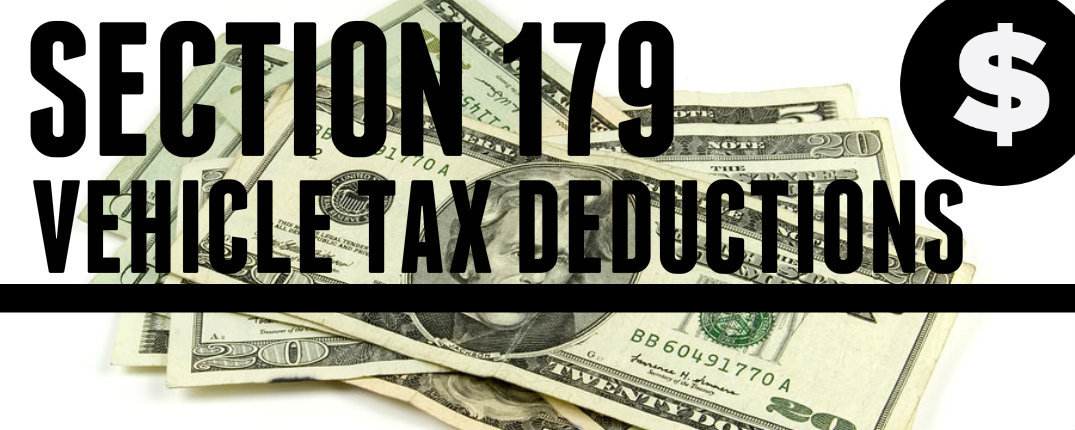- Call us at 1-800-448-9364 or email us at [email protected] | Request Information »
Saving through Expansion: How Section 179 Can Save You Thousands

Spread the Word: The Importance of Business Storytelling
August 28, 2019
Getting the Most out of Interviews: Tips for Employers
January 3, 2020According to the US Small Business Administration, small businesses contributed 65% of new job growth over the last two decades. The small business sector also accounted for 97.5% of all firms that export goods and services overseas (SBA.gov). With a heavy influence on the US economy and in global markets, the federal government is unsurprisingly interested in strengthening small businesses. One of the biggest challenges is taxation, but the government offers a number of incentives designed to decrease tax burdens and promote growth. In this article, we outline one such incentive, the IRS Section 179 deduction, and explain how it can benefit your business.
What Is Section 179?
The Section 179 tax code encourages small businesses to invest in their own growth through new equipment. This write-off accelerates asset depreciation on new equipment by allowing a business to write-off the full price of a vehicle, software, or other machines in the year it is purchased. Normally, assets must depreciate over several years, according to write-off schedules set by the IRS. But through Section 179, businesses can deduct the full purchase price of qualifying equipment or vehicles. Qualifying vehicles must exceed 6,000 pounds, be used at least 50% of the time for business purposes, and be put into service the same year they are purchased. By adding their depreciated value, or expense, to your business, you reduce your amount of taxable income. The higher your depreciation expense, the more money you keep in your pocket.
How Can It Help My Business?
How can Section 179 help you pay less in taxes? Imagine you purchase a new sweeper to expand your company’s services. According to the current IRS policy, vehicles have a depreciable life of five years. If, for example, you purchase an $80,000 vehicle, according to the traditional IRS schedule you can only write off $16,000/year, leaving the remaining value taxable and diluting the benefit of the deduction. However, using 179, the entire purchase price is written off the year the vehicle is bought and put into service. By writing off the full $80,000, you would save thousands in taxes, normally lost to depreciation over the life of a five-year write-off schedule. These savings free up money for more purchases, keep your business competitive, and boost the economy.
There are a few limitations to keep in mind. Section 179 cannot be used to drive business income to a negative number, only to zero. Additionally, applying 179 to a piece of equipment reduces the cost basis of that asset to zero. So if you were ever to sell the vehicle, you would have to pay taxes on any money earned from it. Thus, 179 best applies to high-quality equipment which you plan on keeping in service for a long time.
2019 Updates to the Law
Section 179 has been a part of the federal tax code since 1958, and since then it has undergone a number of changes in response to periods of economic decline and growth in the US. After the 2008 financial crash, a number of federal stimulus initiatives have expanded 179, making it more accessible to small businesses. In 2017, the Tax Cuts and Jobs Act was signed into law, which doubled the deduction cap for new equipment from $500,000 to $1 million. This cap remains in place for 2019. In addition, qualifying small businesses must purchase, lease, or finance less than $2,500,000, a threshold increased from $2,000,000 in previous years.
The update also expands opportunities for deductions related to “qualified improvements to property.” These include interior building improvements that occurred after the original date the property went into service. There are a number of exclusions, among them elevator and escalators, roofs, security systems, and structural alterations. But if you made (or plan to make) any improvements to the interior of your property, such as remodels or updates to offices or the warehouses where you store your vehicles, you should research these new codes and consult your tax expert before the year ends.
Section 179 is subject to change each year without notice, and changes can even take effect in the middle of the year. Look into these opportunities to expand your business before the year ends!
Sources:
New rules and limitations for depreciation and expensing under the Tax Cuts and Jobs Act. (9 April 2018.) Internal Revenue Service. Available at https://www.irs.gov/newsroom/new-rules-and-limitations-for-depreciation-and-expensing-under-the-tax-cuts-and-jobs-act.
Office of Advocacy (Sep 2019). What’s new with small business? US Small Business Administration. Available at https://advocacy.sba.gov/2019/09/24/whats-new-infographic-lets-you-see-the-answers-to-top-small-business-faqs/.
NiteHawk does not provide tax, legal or accounting advice. Consult your own tax, legal and accounting advisers for more information on tax deduction 179 and before engaging in any transaction.

